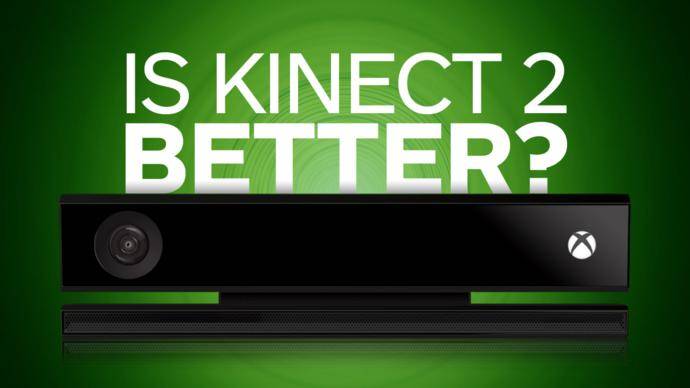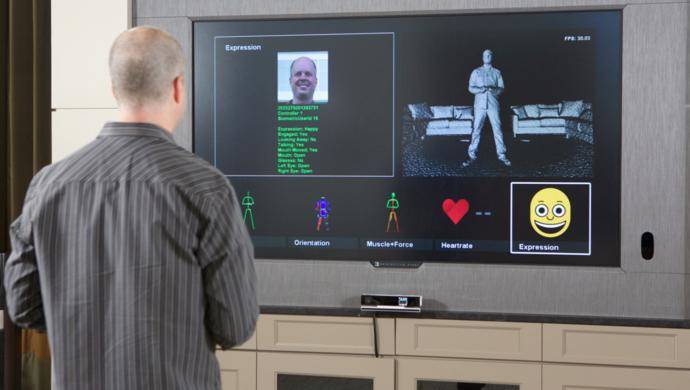It’s a shame Microsoft have lost Confidence in Kinect
Introduction
Kinect was always going to have a tough time proving itself. The original failed because it was an optional peripheral that didn’t do what Microsoft claimed it could and didn’t even approach its actual potential, and with the announcement that an Xbox One will be released without Kinect 2.0, the second iteration of the device looks set to go the same way.
Those that dislike Microsoft or motion gaming as a whole sit smugly, once again witness to an Xbox turnaround. Is this change of heart a kneejerk reaction to Sony’s current gen dominance or could the Kinect really have changed the way we play?
Kinect 2 point Oh
It’s funny – Kinect really could have been something. As someone who has played a lot of games, I can easily think of a whole host of features a camera/microphone set might add to a console. If you can’t see why it could work, I’d say you lack imagination. The potential for something like this could be huge, especially alongside the likes of Oculus Rift.
That’s why, when I ordered my PS4, I had to get a bundle with the included peripheral, because the alternative was missing out on interesting utilisation of vision and sound.
More than that, I was secretly banking on Microsoft. Sony didn’t include a camera by default and so anybody hoping to take advantage of any Kinect-like features needed to pay extra. Fine, I can hear you saying. If you want to make use of these features, pay extra for them.
But a splintered group never gets priority, and developers are never going to work on a feature specifically for a minority of potential purchasers. Knowing that ‘the other side’ had Kinect forced was a beacon of hope, because I knew that Xbox owners weren’t splintered, that everybody who had the system had the potential to use Kinect-exclusive features. Those features would probably make it into the PS4 port by default.
With the news that that will no longer be the case, people on both consoles who would have benefited from its universal implementation will end up losing out. If you trusted enough to buy a camera this early, either because you believed it might be good or because it was forced, now is the time to start questioning your purchase.
Shaking the Tree
The truth is, people hate change. I’m not talking specifically about the Kinect now, but anything that alters somebody’s way of playing a game. After all, this is our hobby, and although we each play in different ways, the basic same things are true: we sit in front of a screen and lose ourselves, connected to another world via a controller or mouse and keyboard.
Altering that almost ubiquitous truth was never going to be easy. By launching a peripheral you either need to be on a forming wave of hype – think Guitar Hero or SingStar – or you need to show something that really works. You can’t let market forces take their toll, because why the hell would anybody want something different when they’ve already got what they want? You need to prove that you have something different, something that will improve the experience, and that takes more than just promises and hype.
Which is exactly what the first Kinect was built on. Shortly after Kinect was announced (as Natal), I wrote an article asking whether Microsoft were making a mistake tackling the Motion market. At the time, Nintendo had dominated with the Wii and it was obvious that the people behind Xbox wanted a piece of the pie. They promised hardcore experiences, but nobody was every going to buy quite an expensive piece of kit on the promise that something might one day come. As a result, Microsoft’s marketing department noted that core gamers weren’t interested in the peripheral, and so no hardcore games ever made it to the system.
Note: that article was slammed with people who felt I couldn’t possibly understand what the Kinect was, or why Microsoft was going to change the face of gaming with it. I was foolish for trying to second guess a huge company. In some ways I was wrong – Kinect sold well enough to warrant its release – but in others I was on track. Those hardcore games never made it to release.
With the Kinect 2.0, the Windows company could have changed everything. They needed to have Kinect improvements in every released game, the ability to interact with the virtual world using motion and speech. Nothing that forced usage, of course, but the option for those that needed to justify the inclusion of a camera. It could have been something small, perhaps shouting to get a group of the undead’s attention in Dead Rising 3.
Little things, in every title, build up to something bigger. It proves you don’t need “Kinect” games and “Xbox One” games, but that the line between the two can be successfully blurred into something that doesn’t require bouncing around the living room. Eventually there could have been entire systems of commands, both input with speech and hand signals, but to start with it would have been nice to see something small.
It never came though. Microsoft included Kinect – a controversial decision but one that could have proven itself with early purchasers – and then expected voice options on the menu to make up for its bulky TV table presence.
Promise and hype – that’s what they thought would help it. With how they decided to handle things, it’s no surprise that they’ve decided to go back on their all-inclusive offer. The point, they’ve conceded, is that people should be allowed to build up their console however they like.
But that’s not true. You don’t need to apologise for the inclusion of Kinect by taking it away, you just need to explain why it’s there – go above and beyond what people are saying on message boards and prove them wrong. The reason it was included we have to presume is because Microsoft had confidence that it could make gameplay better.
So why haven’t we seen evidence of that?
Losing Confidence
It’s a shame that Microsoft have lost confidence in Kinect. They know so much more about what’s happening behind the scenes than we do, about games that’ll be announced two or three years down the line, and they’ve decided that a camera and a microphone will do nothing to help those experiences. Nobody was supporting Kinect and so instead of incentivising it, instead of leading the way with quality design, they’ve dropped the entire thing like a bad idea.
In and of itself it it’s not a bad idea. But the way it’s been handled most definitely made it so. This latest twist in the motion gaming annals will probably kill it off, and we’re left asking whether it could have been so much more.




![image[2]-313_627x390](https://www.gamesreviews.com/wp-content/uploads/2014/05/image2-313_627x390.jpg)

 Mat Growcott has been a long-time member of the gaming press. He's written two books and a web series, and doesn't have nearly enough time to play the games he writes about.
Mat Growcott has been a long-time member of the gaming press. He's written two books and a web series, and doesn't have nearly enough time to play the games he writes about.